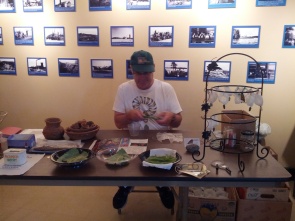The Ely Field Naturalists present Nature Nights: Connecting with Conservation on Wednesday, July 18 at 7:00 p.m. in Classroom CL104 at Vermilion Community College. These programs are free and designed to increase exploration and understanding of the natural environments of Northeastern Minnesota and all that lives there.
Summer in Northeastern Minnesota is about water – swimming, boating, wading and observing its qualities and what is living in it. A growing number of people have an interest in collecting information on what they experience such as loons, invasive species, phenology, and water quality. Ely Field Naturalists are working with a variety of projects to enable local residents to have the training, resources and equipment needed to engage with what can be found in the water.
Community Conservationist, Becca Reiss, will introduce the activities and resources of the North St. Louis County Soil and Water Conservation District (NSLSWCD). Located out of Virginia, MN, the North St. Louis Soil & Water Conservation District is a local government agency that provides conservation and resource management services especially to private landowners. Becca has lived and worked in Ely for many years and is working to expand awareness about the NSLSWCD’s programs and services especially in relation to the watersheds in which we live, work, and play. She would also like share opportunities for you to develop a closer connection with your favorite stream or lake and a means to share what you learn about that body of water.












